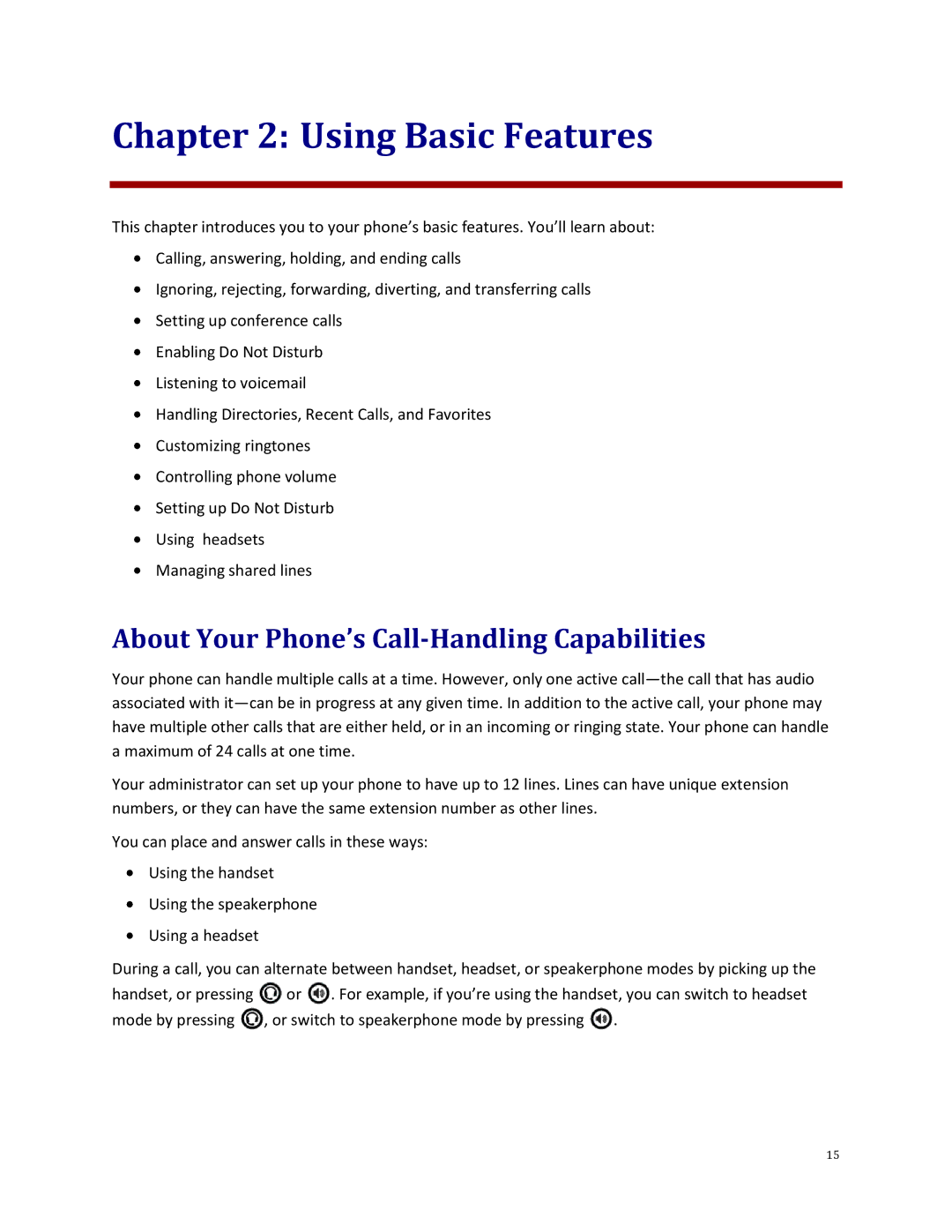Chapter 2: Using Basic Features
This chapter introduces you to your phone’s basic features. You’ll learn about:
![]() Calling, answering, holding, and ending calls
Calling, answering, holding, and ending calls
![]() Ignoring, rejecting, forwarding, diverting, and transferring calls
Ignoring, rejecting, forwarding, diverting, and transferring calls
![]() Setting up conference calls
Setting up conference calls
![]() Enabling Do Not Disturb
Enabling Do Not Disturb
![]() Listening to voicemail
Listening to voicemail
![]() Handling Directories, Recent Calls, and Favorites
Handling Directories, Recent Calls, and Favorites
![]() Customizing ringtones
Customizing ringtones
![]() Controlling phone volume
Controlling phone volume
![]() Setting up Do Not Disturb
Setting up Do Not Disturb
![]() Using headsets
Using headsets
![]() Managing shared lines
Managing shared lines
About Your Phone’s Call-Handling Capabilities
Your phone can handle multiple calls at a time. However, only one active
Your administrator can set up your phone to have up to 12 lines. Lines can have unique extension numbers, or they can have the same extension number as other lines.
You can place and answer calls in these ways:
![]() Using the handset
Using the handset
![]() Using the speakerphone
Using the speakerphone
![]() Using a headset
Using a headset
During a call, you can alternate between handset, headset, or speakerphone modes by picking up the handset, or pressing ![]() or
or ![]() . For example, if you’re using the handset, you can switch to headset mode by pressing
. For example, if you’re using the handset, you can switch to headset mode by pressing ![]() , or switch to speakerphone mode by pressing
, or switch to speakerphone mode by pressing ![]() .
.
15
